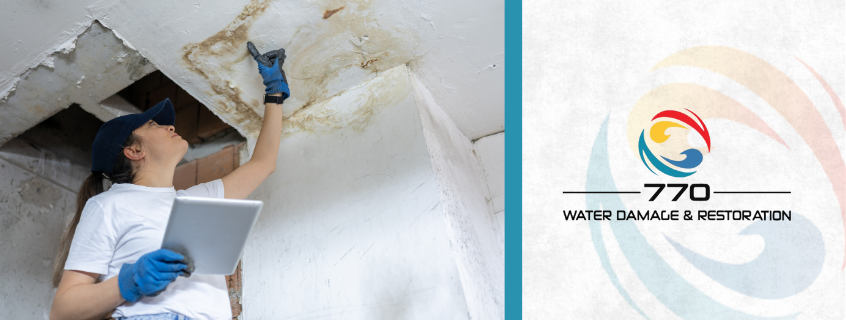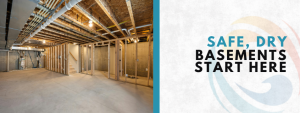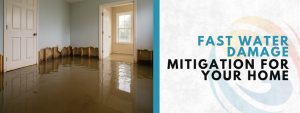
At first glance, peeling paint might seem like no big deal — just a sign that your home needs a fresh coat. But in many cases, that flaking surface is trying to tell you something deeper. Paint doesn’t just peel without a reason. It’s your home’s way of signaling that something underneath isn’t right.
Like a fever before the flu or a small leak before a flood, these early warnings can protect you from bigger issues later on. Whether you’re seeing bubbles, cracks, stains, or full sections peeling away, peeling paint wall signs could mean serious trouble is brewing behind the scenes.
Let’s explore five key peeling paint signals and what they really reveal about your home’s health.
1. Bubbling or Blistering Paint Often Means Water Trouble
You notice bubbles forming under the paint, or maybe small blisters popping up in odd spots. These aren’t just cosmetic flaws — they’re among the most urgent peeling paint wall signs to watch for. When water gets into the wall, it can push the paint out, causing those bubbles or blisters to appear.
So where’s the moisture coming from? It could be a tiny leak from your roof, a plumbing issue inside the wall, or even humidity trapped inside the room.
What to Look For:
- Soft or raised paint that feels spongy to the touch
- Paint bubbling near windows, sinks, or ceilings
- A damp, musty odor in the room
Common Water Sources Behind the Problem:
- Broken or leaking pipes
- Cracks in the roof or walls
- Poor bathroom or kitchen ventilation
- Condensation from humid air
Water doesn’t just ruin paint. It creates the perfect environment for mold, damages insulation, and even rots wood framing.
If you notice these early warning signs, don’t just repaint — act fast. Learn how to properly restore your walls after moisture damage before things escalate.
2. Cracking Paint Could Be a Sign of a Shifting Foundation
Tiny cracks forming in a paint job may seem harmless, especially in older homes. But some peeling paint wall signs—especially long or jagged cracks—can indicate that the foundation is shifting or that there’s structural stress in the home.
Walls naturally expand and contract, especially when temperature or humidity levels swing. Over time, this movement pulls at the surface. When paint can’t keep up, it splits apart.
Warning Signs to Watch:
- Hairline cracks forming above doors or windows
- Gaps where the wall meets the ceiling
- Paint peeling in long strips near corners
What Might Be Happening Behind the Wall:
- Foundation settling unevenly
- Drywall seams pulling apart
- Wood framing bending under pressure
- Past moisture damage has softened surfaces
If cracking paint is happening alongside sticking doors or sloped floors, you may have a deeper issue on your hands. Ignoring it can lead to expensive repairs and long-term safety risks.
To get ahead of the damage, look into professional water damage services that address hidden structural threats. A proper inspection can uncover hidden problems before they get worse.
3. Flaking Paint in Bathrooms Often Points to Poor Airflow
Bathrooms, laundry rooms, and even kitchens are steamy spaces. When there’s not enough ventilation, moisture has nowhere to go — and that’s bad news for your walls. Peeling, flaking paint in these areas is one of the most frequent peeling paint wall signs caused by trapped humidity.
When the air is always damp, paint weakens over time. This leads to thin flakes falling off, usually near the ceiling, baseboards, or behind toilets.
Common Indicators:
- Paint curling or peeling near exhaust fans
- Walls feel damp or sticky long after a shower
- Mold spots appearing near windows or corners
Simple Ways to Fix the Problem:
- Use an exhaust fan during and after hot showers
- Crack a window to allow air to escape
- Wipe down walls and mirrors to reduce surface moisture
- Choose mold-resistant paint formulas
Bathroom Paint Durability Chart:
| Paint Type | Moisture Resistance | Best Use Areas |
| Matte/Flat | Low | Bedrooms, hallways |
| Eggshell | Moderate | Living rooms, dining |
| Satin | Good | Kitchens, bathrooms |
| Semi-Gloss | Excellent | Bathrooms, laundry rooms |
| High-Gloss | Very High | Trim, cabinets, doors |
By controlling moisture in high-humidity areas, you not only extend the life of your paint but also protect against deeper water damage that can be expensive to repair.
4. Peeling Exterior Paint? Weather Might Be the Culprit
Exterior paint takes a beating. From blazing sun to pounding rain and freezing nights, your home’s outer shell is exposed 24/7. If you notice peeling paint wall signs outside — especially on sunny or weather-facing walls — it’s a clear message that your paint protection has failed.
When outdoor surfaces aren’t sealed properly, the paint starts to degrade. Add in temperature shifts and heavy rain, and you’ve got a recipe for rapid peeling.
Look for These Trouble Spots:
- Blistered paint on siding
- Peeling near gutters, trim, or eaves
- Fading or chalky surfaces that rub off easily
How Weather Damages Exterior Paint:
- The sun dries out paint and makes it brittle
- Rain gets behind poor sealing and lifts the paint
- Wind drives debris against siding, weakening paint layers
- Snow and frost expand surfaces, leading to cracks and chips
Protection Tips:
- Always use exterior-grade paint with UV blockers
- Prime surfaces before painting for better adhesion
- Repaint every 5–7 years, or sooner in harsh climates
- Caulk around windows and doors to keep out moisture
Taking care of your home’s exterior isn’t just about looks. It’s a defense strategy. Cracked paint on the outside can invite serious problems inside if left unchecked.
5. Stains or Discoloration Under Peeling Paint May Mean Mold
One of the most alarming peeling paint wall signs is discoloration. If your walls are not just peeling, but showing dark spots, strange colors, or mildew-like patterns — mold may be growing underneath.
This is especially dangerous in basements, behind bathroom walls, or near plumbing lines. Mold often hides behind paint layers until moisture or air pressure forces it out.
How to Spot Mold Behind Paint:
- Green, black, or brownish patches under curling paint
- A damp or musty smell near the peeling area
- Allergy-like symptoms when inside the room
Why It’s a Health Hazard:
- Mold spores can cause breathing problems
- It weakens drywall, making it soft or crumbly
- Children and seniors are more vulnerable
- Spores can travel through air vents to other rooms
Steps to Prevent and Treat Mold Behind Paint:
- Stop leaks immediately — even small drips
- Use dehumidifiers in basements or laundry rooms
- Replace wet drywall with mold-resistant boards
- Avoid painting over mold — it will return
If you suspect mold, don’t just repaint and hope it stays hidden. Instead, schedule an inspection with a professional team that can safely remove mold and moisture at the root.
The Final Word: Your Walls Are Telling You Something
When you see peeling paint wall signs, it’s not just about paint. It’s your home trying to tell you there’s a bigger issue underneath. Water leaks, foundation trouble, poor airflow, weather damage, and mold all reveal themselves through the surface — if you know what to look for.
Let’s recap what peeling paint could be saying:
| Type of Peeling | What It Likely Means |
| Bubbling/Blistering | Hidden water leaks |
| Cracks and Gaps | Structural movement or settling |
| Bathroom Flaking | Poor ventilation and moisture buildup |
| Exterior Peeling | Weather exposure and aging paint |
| Stained or Moldy Spots | Mold and health risks behind the wall |
By listening to these signs early, you can fix small issues before they become major disasters. Always investigate before covering up a problem with new paint. And when in doubt, don’t guess — consult with professionals who know what’s hiding behind your walls.
Protect your home. Protect your health. Let your walls speak, and don’t ignore what they’re saying.
Frequently Asked Questions: Understanding Peeling Paint Wall Signs
Why is my paint suddenly peeling even though it was applied recently?
Fresh paint can peel quickly if moisture is trapped beneath the surface or if the wall wasn’t properly primed. This usually points to hidden issues like water intrusion, humidity, or poor surface preparation.
Should I be worried if only one small area of paint is peeling?
Yes, even a small peeling area can signal a deeper problem like a leak or mold behind the wall. It’s best to investigate early to avoid costly damage later.
Can peeling paint be a sign of mold or health risks in my home?
Absolutely—discoloration or musty odors with peeling paint often indicate mold growth. Mold can affect air quality and cause allergies, especially for children and seniors.
Is it safe to repaint over peeling areas without fixing the cause?
No, repainting without solving the root cause will only mask the issue temporarily. Moisture or structural problems will continue to worsen beneath the surface.
What’s the best way to prevent paint from peeling in humid rooms like bathrooms?
Ensure proper ventilation with exhaust fans, use mildew-resistant paint, and wipe down damp surfaces. Controlling humidity is key to keeping your paint intact.






